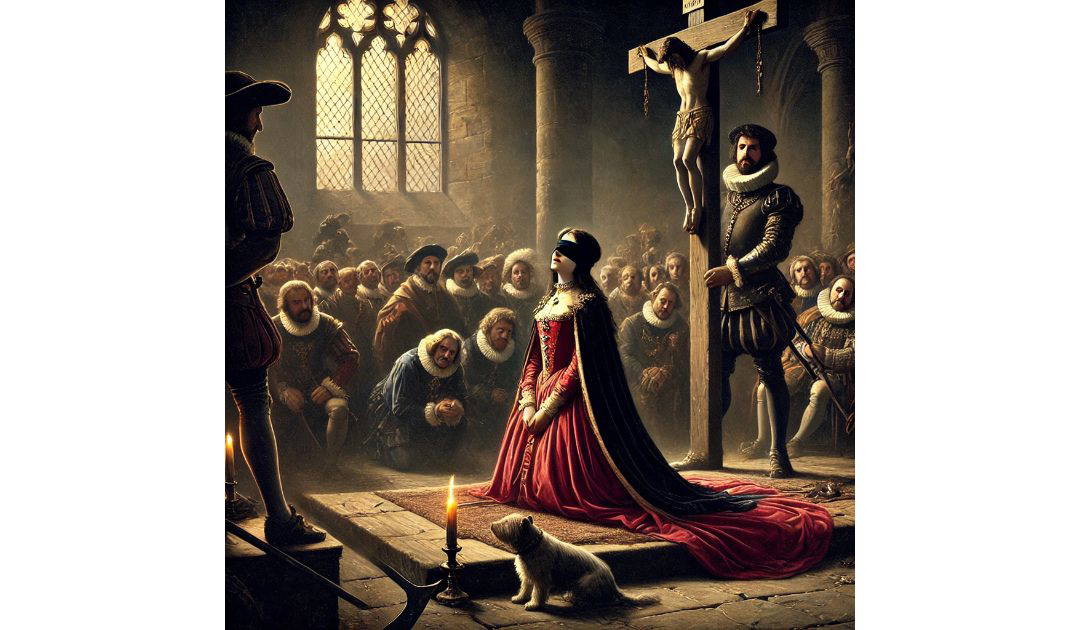On 8th February 1587 Mary Queen of Scots was beheaded at Fotheringay Castle. I have posted about Mary before, because she knighted my ancestor, Elizabethan Spy, Sir Anthony Standen. The execution itself was rather a gruesome mess.
Mary was led to the Great Hall of Fotheringhay Castle wearing a black cloak over a red dress (symbolising martyrdom in Catholicism). She was 56 years old. She forgave her executioners and declared herself a true Catholic. As she was blindfolded and placed her head on the block, she repeated, “In manus tuas, Domine” (Into your hands, O Lord). The first axe blow missed her neck, hitting the back of her head. The second blow severed most of her neck, but it took a third strike to fully behead her. When the executioner lifted her head, her wig came off, revealing that her hair had turned white from years of stress. Her small dog was found hiding under her skirts, refusing to leave her body.
Mary, a Catholic and former Queen of France, had been forced to abdicate the Scottish throne in 1567 in favor of her son, James VI of Scotland. She fled to England in 1568, seeking Elizabeth’s protection, but was instead imprisoned for nearly 19 years. Throughout her captivity, Catholic supporters viewed her as the rightful ruler of England, leading to numerous plots against Elizabeth. The final straw was the Babington Plot of 1586, where Mary was caught allegedly approving the assassination of Elizabeth in secret letters.
Mary was put on trial for treason in October 1586. She denied plotting Elizabeth’s death but was found guilty and sentenced to death. Queen Elizabeth hesitated to sign the death warrant, fearing the repercussions of executing an anointed monarch. However, after political pressure, she reluctantly authorized it.
The execution of Mary Queen of Scots shocked Europe. Catholic nations, especially Spain and France, were outraged, and her son James VI of Scotland later worked to reconcile with Elizabeth. In 1603, after Elizabeth died, James VI became James I of England, uniting the crowns of England and Scotland, the very outcome Mary had once dreamed of. Mary was initially buried at Peterborough Cathedral, but her son later moved her remains to Westminster Abbey in 1612, where she lies today.

